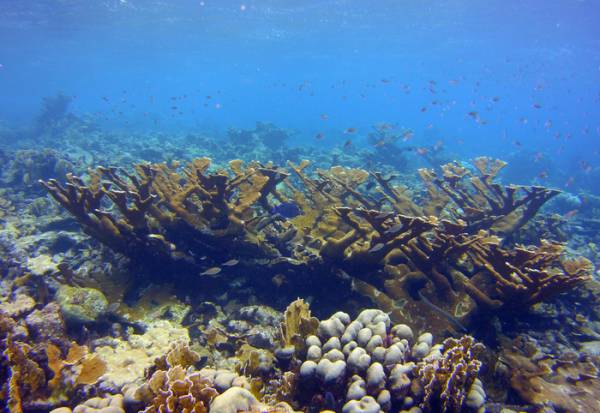In a discovery that challenges over a century of evolutionary conventional wisdom, corals have been shown to pass somatic mutations — changes to the DNA sequence that occur in non-reproductive cells — to their offspring. The finding, by an international team of scientists led by Penn State biologists, demonstrates a potential new route for the generation of genetic diversity, which is the raw material for evolutionary adaptation, and could be vital for allowing endangered corals to adapt to rapidly changing environmental conditions.
“For a trait, such as growth rate, to evolve, the genetic basis of that trait must be passed from generation to generation,” said Iliana Baums, professor of biology at Penn State and leader of the research team. “For most animals, a new genetic mutation can only contribute to evolutionary change if it occurs in a germline or reproductive cell, for example in an egg or sperm cell. Mutations that occur in the rest of the body, in the somatic cells, were thought to be evolutionarily irrelevant because they do not get passed on to offspring. However, corals appear to have a way around this barrier that seems to allow them to break this evolutionary rule.”
Since the time of Darwin, our understanding of evolution has become ever more detailed. We now know that an organism’s traits are heavily determined by the sequence of their DNA. Individuals in a population vary in their DNA sequence, and this genetic variation can lead to the variation in traits, such as body size, that could give an individual a reproductive advantage. Only rarely does a new genetic mutation occur that gives an individual such a reproductive advantage and evolution can only proceed further if — and this is the key — the individual can pass the change to its offspring.
Read more at: Penn State University
The Elkhorn coral, Acropora palmata, grows into large stands via polyp budding and fragmentation so that many colonies belong to the same clone or genet. During growth, mutations can accumulate in its cells and new research shows that the Ekhorn coral is able to pass these mutations onto to their sexual offspring. This is unlike most animals that prevent such a transfer from the body to reproductive cells. (Photo Credit: Iliana Baums)


